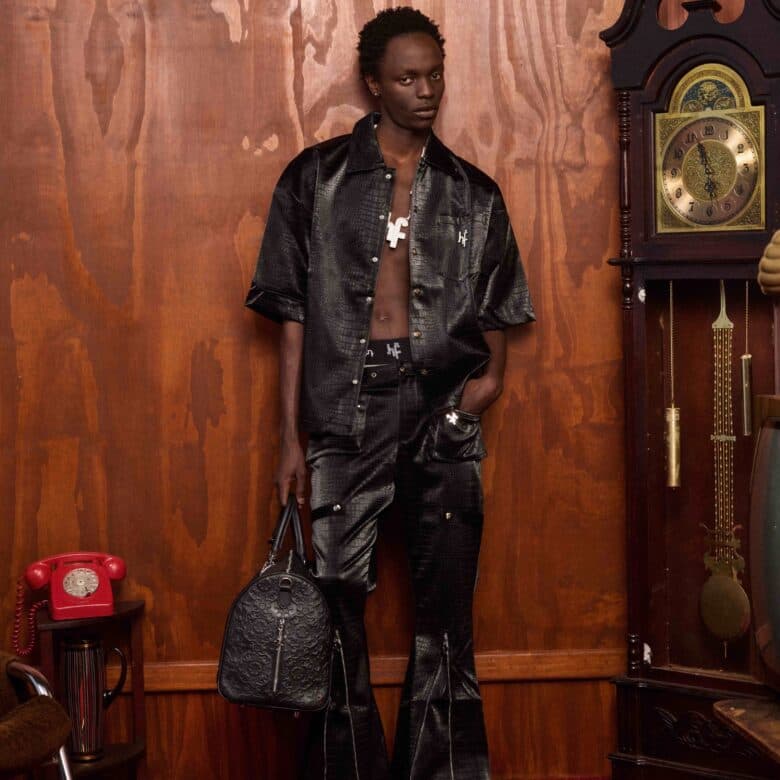‘Angelheaded Hipster’ director on Marc Bolan’s legacy: “His art came from the heart”

It’s now been 46 years since Marc Bolan passed away at the age of 29 when a mini driven by his girlfriend crashed into a tree on Barnes Common. And although the T-Rex frontman died far too young, his spirit has carried on in the four-plus decades since, with songs such as ’20th Century Boy’ and ‘Children of the Revolution’ becoming enduring anthems that haven’t lost any of the electricity that Bolan first brought to them. After all those years, the T Rex frontman’s legacy lives on, and thanks to a new documentary by Ethan Silverman, we’re getting an even better insight into the icon’s musical genius. Angelheaded Hipster: The Songs of Marc Bolan and T. Rex looks to mimic its subject’s fluidity and genre-bending ability by serving up a documentary that defies typical structure.
In 2020, a selection of artists, including Nick Cave, U2, Joan Jett and more, gathered in the studio to record an album of covers from the rock legend, so director Ethan Silverman decided to capture its making on camera. Throughout the film, Silverman uses the likes of those artists to discuss the songs themselves as they attempt to create their own versions and use those as a springboard to delve back into a well-curated archive of Bolan material. Meanwhile, interviews with superstars like Elton John, Ringo Starr and Billy Idol provide sharp observations on the artist’s penmanship. The intricacies of Bolan’s personal life may have been explored a million times over, but overall, Angelheaded Hipster is all about the music, and boy, is that music good.
Here, HUNGER sits down with the film’s director, Silverman, to discuss Bolan’s musical legacy, his challenges producing the film and digging through archives

Congratulations on the release of Angelheaded Hipster! How long had the project been in production and was there a particular moment that sparked your interest in making the film?
Thanks! Seven years plus. I discovered the entire catalogue online and I realised what I had been missing. It sounded so modern to me and of course I heard the influence in everything that has come since the late ’70’s. Then I started talking to musicians I respected and pretty much all of them raved about his songs and influence on their own work, so I wanted to create a new album of songs. The film idea came from figuring out how to get funds to create the album.
What impact would you say Marc Bolan’s music has had on you personally?
Music and, to a large degree, rock & roll, has been the soundtrack for my own life. Bolan’s music energises and inspires me. From psychedelic folk to straight ahead 50s/60s to rythm & blues to punk – these genres are a visceral and emotional backdrop for me. It’s sexy, smart and fun. Isn’t that what we all want to be?
How did you ensure you accurately represented who Bolan was both as a person and a musician?
I hope I have done so. I just followed my instincts from listening to his music, reading and scouring old TV footage. Then, when I began shaping the film with the editors and had a treatment, I used the interviews with the folks who knew him best. Sometimes, I was corrected, but often, I found myself on the right track.
What were some of the biggest challenges you faced during the film’s production?
The biggest challenge was the greatest gift in the end: that is, the very long downtime between shoots and financing. It was hard to always pick and go with a crew when we didn’t have a consistent shooting and editing schedule. This was frustrating for everybody. However, those long breaks gave me the space to breathe, think and plan my next moves. Also, just to think about Marc, his songs, and how I wanted to tell the story.
Do you have a particular favourite scene from the film?
From the contemporary footage, Snarky Puppy on the roof in Brooklyn (where I was born) performing ‘The Slider’. I love the way it looks and sounds. From the archives, the interview with the two young fans who were outside Marc’s office every day waiting for him. One of the girls from the footage actually contacted me last week!

There’s a huge variety of artists involved in the film. What was it like getting their insight on Bolan, and how did you decide who you wanted to be involved in the project?
Hal Wilner’s good friend Nick Cave showed remarkable sensitivity to Marc’s lyric writing and unique style. Joan Jett understood his sexual edge. Joe Elliott knew the theatricality was what put him over. Ringo loved and admired the whole package. I could go on and on.
Why do you think Bolan is held in such high regard by his peers?
Simple – authenticity. His art came from the heart and was processed through his talent.
The film also includes a fair amount of archival footage – what was it like to dig through all of those moments?
Fun and daunting. It was ultimately inspiring. He was short, but he was head and shoulders above the rest.
How do you feel the music industry has changed since Bolan was at his peak?
It was always about art and money. Now it’s about money.
What impact do you think Bolan has left on the music industry and landscape overall?
Freedom of expression skillfully done.
What do you hope people can take away from Bolan’s story?
Don’t be afraid to be tough. Don’t be afraid to be kind.

